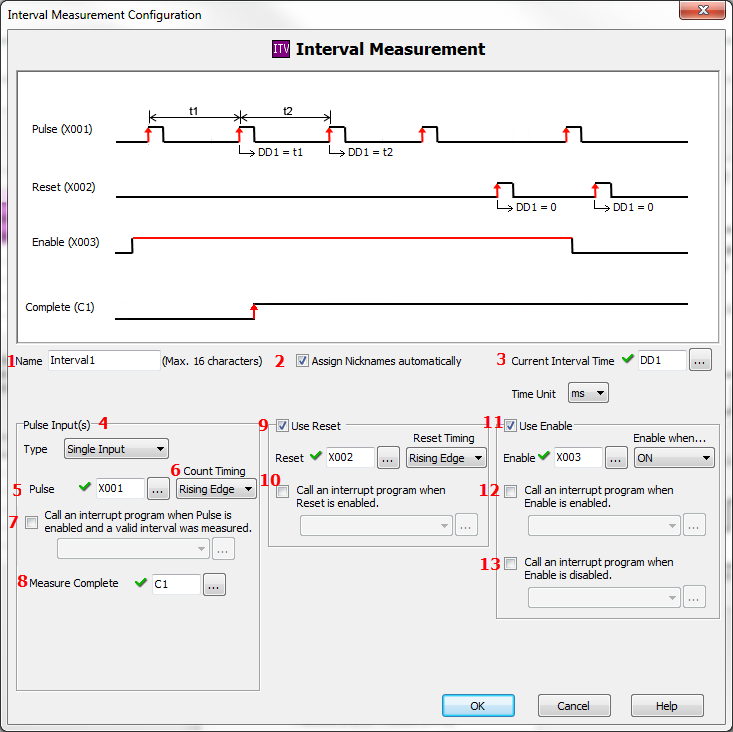Topic: CL224

| Interval Measurement |
Topic: CL224
|
The Interval Measurement measures the time between two edges. The two edges can be of a single input, or edges from two different inputs.

![]()
1 Name: This text is used to Prefix Nicknames of addresses used by this configuration.
2 Assign Nicknames automatically: Nicknames can be assigned to each address automatically. If you want to manage the Nicknames manually then disable this feature.
3 Current Interval Time: Current Interval Time: This is the Accumulator register of the High Speed Timer. It is updated after each measurement is complete
4 Pulse Input Type: Pulse Input Type: There are two types available; Single Input, Dual Input. The timing diagram changes to show the selected operation.


5 Pulse Input Bit: You can use only the CPU Built-in discrete inputs which are designated for high speed. Inputs cannot be shared by different high speed functions.
6 Count Timing: Select the active edge for the measurement
7 Call an interrupt program: An Interrupt Program can be called when the measurement is complete.
8 Measurement Complete: This bit is Set after each measurement. Rung logic should be used to Reset the bit.
9 Use Reset: Any X or C bit can be used to Reset the Timer on either the Rising or Falling Edge.
10 Call an interrupt program when Reset is enabled: An Interrupt Program can be called when the Reset operation is triggered. This option is grayed out if the Reset Input is not a high-speed Input.
11 Use Enable: Any X or C bit can be used to Enable the Counter when either high or low.
12 Call an interrupt program when Enable is enabled: An Interrupt Program can be called when the Enable operation is triggered. This option is grayed out if the Input is not a high-speed Input.
13 Call an interrupt program when Enable is disabled: An Interrupt Program can be called when the Disable operation is triggered. This option is grayed out if the Enable Input is not a high-speed Input.
CPU Built-in
I/O Setup: Output Tab (Basic and Standard CPU)
CPU Built-in I/O Setup: General Tab (Basic and Standard CPU)
Example: Making the Preset Table Values Retentive